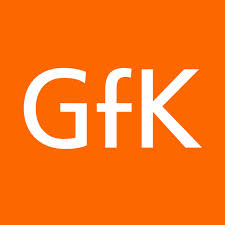 Results of GfK Radio Audience Measurement second wave 2015 survey
Results of GfK Radio Audience Measurement second wave 2015 survey
Kuala Lumpur, November 5, 2015 – Radio listenership in Peninsular Malaysia has continued to grow steadily to reach 91% of people aged 10 years and above, according to latest results from GfK. According to the Radio Audience Measurement Wave 2 survey findings, the average radio listener in the country spends 16 hours listening to radio in a week.
Radio penetration among those aged 10-29 years remains stable with high weekly reach of 92%. Based on the most recent data, listeners aged above 30 years are consuming more radio than before; from a weekly reach of 85% in the first wave of the survey to 90% in the second wave.
“Despite the challenges presented by new media in today’s digital age, good old radio continues to be effective in reaching out to nine in ten of the population in Malaysia,” highlighted Selinna Chin, managing director for GfK in Malaysia. “Results revealed that most people tune in during the morning commute to school or work, and lunch time—so advertisers seeking to get the most bang for their advertising buck should choose these two peak radio listening periods to air their messages.”
More listeners aged over 30 years tune in from 7 to 9 in the morning, 12 noon to 2, and 5 to 7 in the evening during weekdays. As for the younger group aged between 10 to 29 years, their peak listening hours are 7 to 9 am, 5 to 7pm, and 9 to 11 pm during weekdays.
About 3 in 10 listeners aged 10 years and above consume radio via smartphone or pay TV decoder. The time spent listening to radio tend to be higher when using mobile apps and internet platforms, as studies showed that listeners listening via these methods tend to spend an average of 18 hours weekly tuning in. And even though majority of listeners are still tuning in via their radio at home, car radio listenership has increased when compared to the results from the previous wave—reaching out to 12 million listeners aged 10 years and above.
“The increase in car radio listening is not only seen in Malaysia, but across many other countries, especially in those where there have been a rapid increases in car ownership and the subsequent jams that accompany this development,” observed Chin. “Radio as one of the mass communication medium continues to be a relevant in the daily life of the society in urban and more so rural areas, as an entertainment medium and as a means for conveying the news and public events to the people. We can be sure that this traditional mass medium will continue to be an effective platform to deliver informative messages to the wider audience in a timely manner,” she concluded.
About the GfK Radio Audience Measurement Survey
GfK’s radio ratings survey is conducted in two waves per year among 12,000 unique individuals which 10,000 of them record their radio listening habits on paper and 2,000 from online panel uses the electronic diaries to record their radio listening for a week. Radio listening diary is given to each individual to record every station which they listen to (for more than 8 minutes), in quarter hour blocks. They also have to record where they listened to the said station (car, home, work or elsewhere), and on what device (AM/FM radio, internet or others). The most recent Malaysian survey 2 2015 was conducted from August 2 to September 12.
GfK provides radio audience measurement currency in eight European countries and also three countries in Asia Pacific– Malaysia, Australia and New Zealand (launching in 2016). In Australia, a total of 50+ radio stations participate in our radio ratings service, which covers all forms of radio listening: analogue, DAB+, and online streaming.
About GfK
GfK is the trusted source of relevant market and consumer information that enables its clients to make smarter decisions. More than 13,000 market research experts combine their passion with GfK’s long-standing data science experience. This allows GfK to deliver vital global insights matched with local market intelligence from more than 100 countries. By using innovative technologies and data sciences, GfK turns big data into smart data, enabling its clients to improve their competitive edge and enrich consumers’ experiences and choices.
For more information, please visit www.gfk.com or follow GfK on Twitter: https://twitter.com/GfK_en
